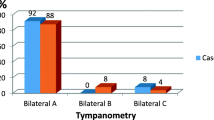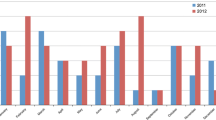Abstract
Diabetes mellitus is an independent risk factor for falling, particularly in the elderly. Due to chronic hyperglycemia and hyperinsulinemia patients with diabetes mellitus may have neurological deficits as peripheral neuropathy that is a debilitating micro-vascular complication affecting the proximal and distal peripheral sensory and motor nerves. Sensory neuropathy is prominent and represents the chief contributor to postural instability in diabetic subjects. Diabetic retinopathy is another complication consequent to a breakdown of the inner blood-retinal barrier with accumulation of extracellular fluids in the macula and growth of new vessels causing retinal detachment. Together peripheral neuropathy and retinopathy contribute to increase the risk of falls in diabetic patients, but a certain vestibular organs impairment should not be underestimated. Nevertheless, the exact mechanism and localization of peripheral vestibular damage consequent to chronic hyperglycemia and hyperinsulinemia are currently not still understood. Moreover it is not defined the possible role of these two blood conditions in worsening the prognosis of typical vestibular pathologies like “benign paroxysmal positional vertigo” and “Meniere disease”. The aim of this review was to retrieve all studies investigating about the balance system alterations in patients suffering of diabetes. A search thorough Ovid MEDLINE was performed to enroll all eligible articles. Fourteen studies comprising a total of 1364 patients were included and analyzed in detail. On the basis of data reported in our review it appears plausible to hypothesize a direct connection among chronic hyperglycemic/hyperinsulinemic damage and peripheral vestibular organ dysfunction.

Similar content being viewed by others
Abbreviations
- DM:
-
Diabetes mellitus
- BPPV:
-
Benign paroxysmal positional vertigo
- MD:
-
Meniere disease
- cVEMP:
-
Cervical vestibular evoked myogenic potential
- oVEMP:
-
Ocular vestibular evoked myogenic potential
References
Kamali B, Hajiabolhassan F, Fatahi J, Nasli Esfahani E, Sarrafzadeh J, Faghihzadeh S (2013) Effects of diabetes mellitus type Ι with or without neuropathy on vestibular evoked myogenic potentials. Acta Med Iran 51(2):107–112
American Diabetes Association. Standards of medical care in diabetes. (2012) Diabetes Care 35(Suppl 1):S11–63
Brownlee M, Cerami A, Vlassara H (1988) Advanced glycosylation end products in tissue and the biochemical basis of diabetic complications. N Engl J Med 318(20):1315–1321
Antcliff RJ, Marshall J (1999) The pathogenesis of edema in diabetic maculopathy. Semin Ophthalmol 14:223–232
Kamgar M, Nobakhthaghighi N, Shamshirsaz AA, Estacio RO, McFann KK, Schrier RW (2006) Impaired fibrinolytic activity in type II diabetes: correlation with urinary albumin excretion and progression of renal disease. Kidney Int 69(10):1899–1903
Deli G, Bosnyak E, Pusch G, Komoly S, Feher G (2013) Diabetic neuropathies: diagnosis and management. Neuroendocrinology 98(4):267–280
Pijpers E, Ferreira I, de Jongh RT et al (2012) Older individuals with diabetes have an increased risk of recurrent falls: analysis of potential mediating factors: the Longitudinal Ageing Study Amsterdam. Age Ageing 41(3):358–365
Myers SF, Ross MD (1987) Morphological evidence of vestibular pathology in long-term experimental diabetes mellitus. II. Connective tissue and neuroepithelial pathology. Acta Otolaryngol 104:40–49
Myers SF (1998) Myelin-sheath abnormalities in the vestibular nerves of chronically diabetic rats. Otolaryngol Head Neck Surg 119:432–438
Myers SF, Tormey MC, Akl S (1999) Morphometric analysis of horizontal canal nerves of chronically diabetic rats. Otolaryngol Head Neck Surg 120(2):174–179
DʼSilva LJ, Staecker H, Lin J et al (2017) Otolith dysfunction in persons with both diabetes and benign paroxysmal positional vertigo. Otol Neurotol 38(3):379–385
Lasagni A, Giordano P, Lacilla M et al (2016) Cochlear, auditory brainstem responses in Type 1 diabetes: relationship with metabolic variables and diabetic complications. Diabet Med 33(9):1260–1267
D’Silva LJ, Lin J, Staecker H, Whitney SL, Kluding PM (2016) Impact of diabetic complications on balance and falls: contribution of the vestibular system. Phys Ther 96(3):400–409
Fife TD (2009) Benign paroxysmal positional vertigo. Semin Neurol 29(5):500–508
Raynor E, Robison WG, Garrett CG, McGuirt WT, Pillsbury HC, Prazma J (1995) Consumption of a high-galactose diet induces diabetic-like changes in the inner ear. Otolaryngol Head Neck Surg 113:748–754
Smith TL, Raynor E, Prazma J, Buenting JE, Pillsbury HC (1995) Insulin-dependent diabetic microangiopathy in the inner ear. Laryngoscope 105:236–240
Fukushima H, Cureoglu S, Schachern PA et al (2005) Cochlear changes in patients with type 1 diabetes mellitus. Otolaryngol Head Neck Surg 133:100–106
Akinpelu OV, Mujica-Mota M, Daniel SJ (2014) Is type 2 diabetes mellitus associated with alterations in hearing? A systematic review and meta-analysis. Laryngoscope 124:767–776
Teng ZP, Tian R, Xing FL et al (2017) An association of type 1 diabetes mellitus with auditory dysfunction: a systematic review and meta-analysis. Laryngoscope 127(7):1689–1697
Gawron W, Pospiech L, Orendorz-Fraczkowska K, Noczynska A (2002) Are there any disturbances in vestibular organ of children and young adults with Type I diabetes? Diabetologia 45(5):728–734
Klagenberg KF, Zeigelboim BS, Jurkiewicz AL, Martins-Bassetto J (2007) Vestibulocochlear manifestations in patients with type I diabetes mellitus. Braz J Otorhinolaryngol 73(3):353–358
Rigon R, Rossi AG, Cóser PL (2007) Otoneurologic findings in Type 1 Diabetes mellitus patients. Braz J Otorhinolaryngol 73(1):100–105
Gazioglu S, Boz C (2012) Ocular and cervical vestibular evoked myogenic potentials in multiple sclerosis patients. Clin Neurophysiol 123(9):1872–1879
Rosengren SM, Welgampola MS, Colebatch JG (2010) Vestibular evoked myogenic potentials: past, present and future. Clin Neurophysiol 121(5):636–651
Magliulo G, Iannella G, Gagliardi S, Re M (2015) A 1-year follow-up study with C-VEMPs, O-VEMPs and video head impulse testing in vestibular neuritis. Eur Arch Otorhinolaryngol 272(11):3277–3281
Bektas D, Gazioglu S, Arslan S, Cobanoglu B, Boz C, Caylan R (2008) VEMP responses are not affected in non-insulin-dependent diabetes mellitus patients with or without polyneuropathy. Acta Otolaryngol 128(7):768–771
Konukseven O, Polat SB, Karahan S et al (2015) Electrophysiologic vestibular evaluation in type 2 diabetic and prediabetic patients: air conduction ocular and cervical vestibular evoked myogenic potentials. Int J Audiol 54(8):536–543
Ward BK, Wenzel A, Kalyani RR et al (2015) Characterization of Vestibulopathy in Individuals with Type 2 Diabetes Mellitus. Otolaryngol Head Neck Surg 153(1):112–118
Kalkan M, Bayram A, Gökay F, Cura HS, Mutlu C (2018) Assessment of vestibular-evoked myogenic potentials and video head impulse test in type 2 diabetes mellitus patients with or without polyneuropathy. Eur Arch Otorhinolaryngol 275(3):719–724
Jáuregui-Renaud K, Aranda-Moreno C, Herrera-Rangel A (2017) Utricular hypofunction in patients with type 2 diabetes mellitus. Acta Otorhinolaryngol Ital 37(5):430–435
Cohen HS, Kimball KT, Stewart MG (2004) Benign paroxysmal positional vertigo and comorbid conditions. ORL J Otorhinolaryngol Relat Spec 66(1):11–15
Webster G, Sens PM, Salmito MC et al (2015) Hyperinsulinemia and hyperglycemia: risk factors for recurrence of benign paroxysmal positional vertigo. Braz J Otorhinolaryngol 81(4):347–351
Yoda S, Cureoglu S, Yildirim-Baylan M et al (2011) Association between type 1 diabetes mellitus and deposits in the semicircular canals. Otolaryngol Head Neck Surg 145(3):458–462
Pieskä T, Kotimäki J, Männikkö M, Sorri M, Hietikko E (2018) Concomitant diseases and their effect on disease prognosis in Meniere’s disease: diabetes mellitus identified as a negative prognostic factor. Acta Otolaryngol 138(1):36–40
Bittar RS, Santos MD, Mezzalira R (2016) Glucose metabolism disorders and vestibular manifestations: evaluation through computerized dynamic posturography. Braz J Otorhinolaryngol 82(4):372–376
Kocdor P, Kaya S, Erdil M, Cureoglu S, Paparella MM, Adams ME (2016) Vascular and neuroepithelial histopathology of the saccule in humans with diabetes mellitus. Otol Neurotol 37(5):553–557
Degerman E, Rauch U, Lindberg S, Caye-Thomasen P, Hultgårdh A, Magnusson M (2013) Expression of insulin signalling components in the sensory epithelium of the human saccule. Cell Tissue Res 352(3):469–478
Thorens B, Mueckler M (2010) Glucose transporters in the 21st Century. Am J Physiol Endocrinol Metab 298(2):E141–5
Funding
This study was funded by no grant.
Author information
Authors and Affiliations
Corresponding author
Ethics declarations
Conflict of interest
The authors declare that they have no conflict of interest.
Human and animal rights statement
This article does not contain any studies with human or animal subjects performed by the any of the authors.
Informed consent
For this type of study formal consent is not required.
Additional information
Managed by Massimo Federici.
Rights and permissions
About this article
Cite this article
Gioacchini, F.M., Albera, R., Re, M. et al. Hyperglycemia and diabetes mellitus are related to vestibular organs dysfunction: truth or suggestion? A literature review. Acta Diabetol 55, 1201–1207 (2018). https://doi.org/10.1007/s00592-018-1183-2
Received:
Accepted:
Published:
Issue Date:
DOI: https://doi.org/10.1007/s00592-018-1183-2




